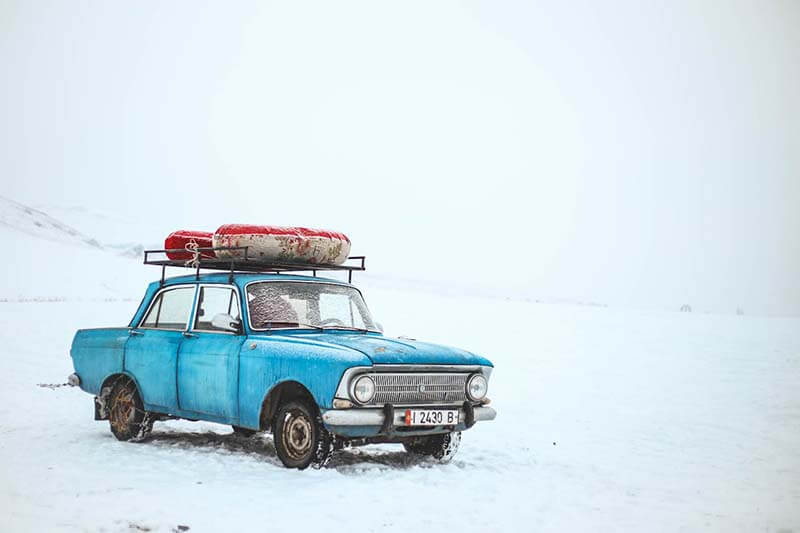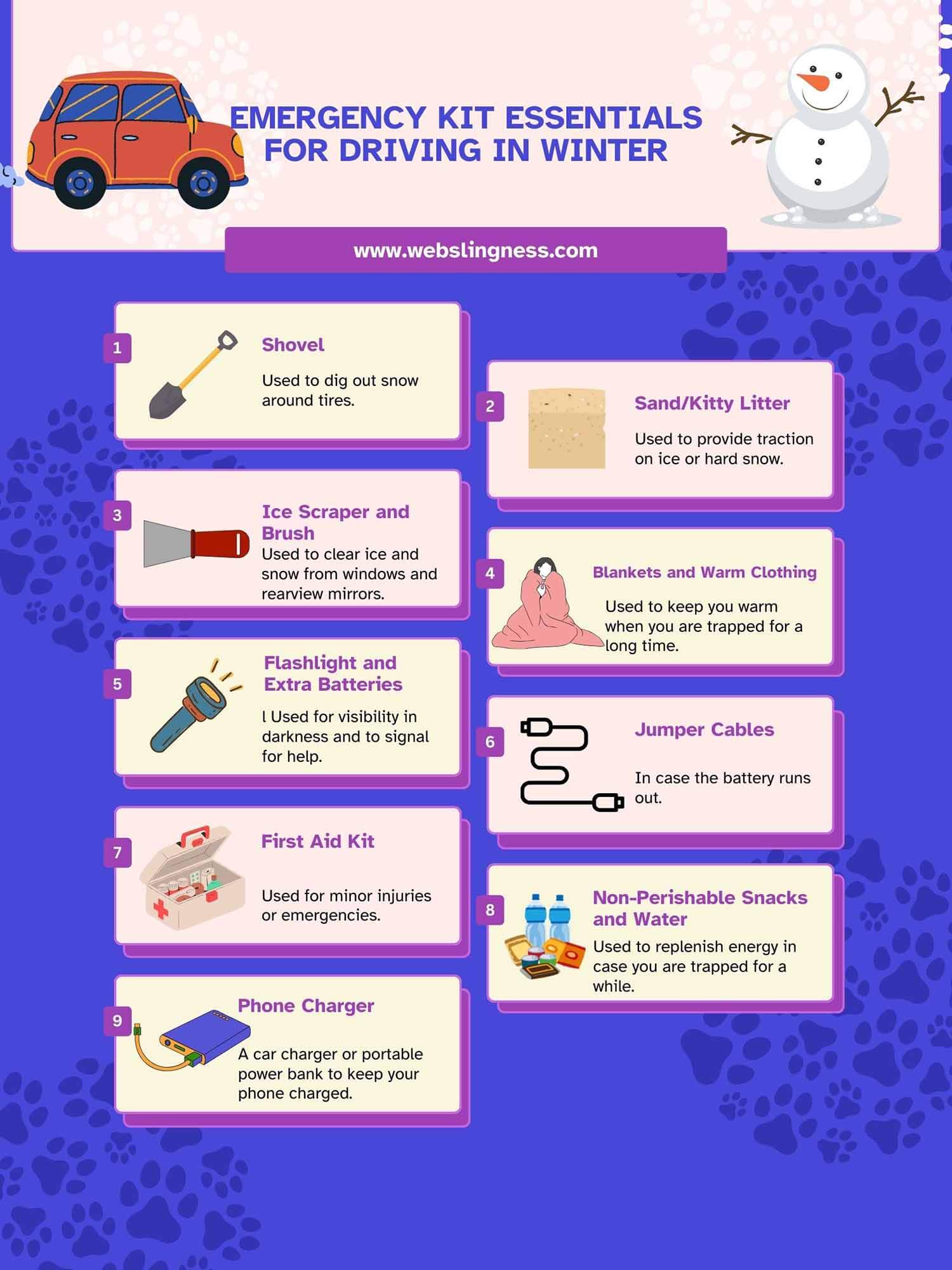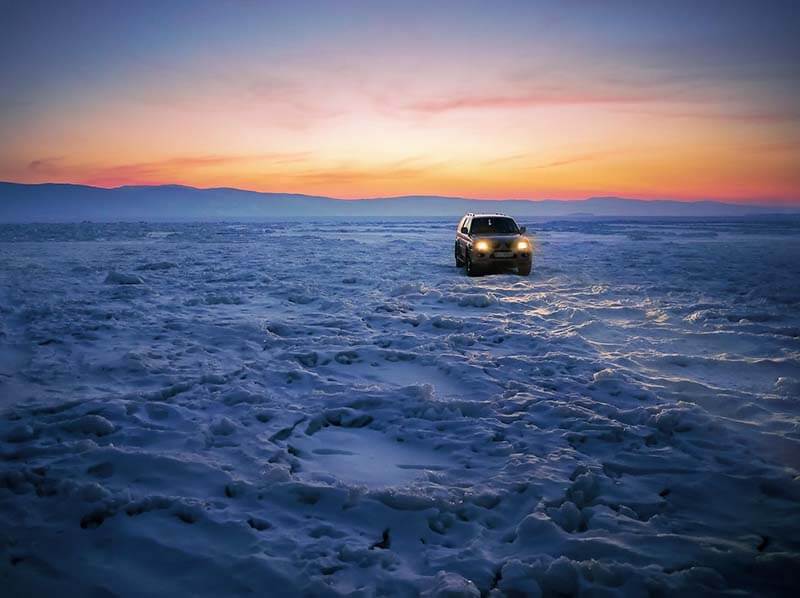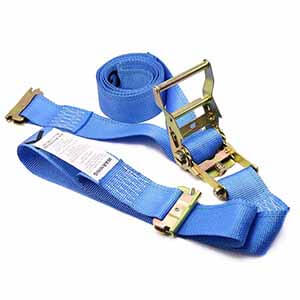How to Prevent and Get Your Car Out of Snow Traps?

Driving in winter is more challenging than ever before. Even if you are an experienced driver, you need to be extra careful when facing icy roads and snow traps with low visibility.
When driving in such bad weather, it is best to master the correct knowledge and stock up on the corresponding supplies in the car. Today, let’s learn how to prevent your vehicle from being stuck in the snow, and you need to know what you should do to get out of trouble as soon as possible if such an incident occurs.
Preparing Your Car for Winter
If you must travel in severe snow or ice, making the necessary preparations before departure will reduce your risks in such weather.
Winter Tires
Most of the time, people install all-season tires on their vehicles, which are suitable for use all year round. However, for driving on cold, snowy, and icy roads, we recommend that you use winter tires, which have a deeper tread and are made of a softer rubber compound that remains flexible in cold temperatures, providing better traction and control.
How to Choose the Right Tires?
- Tread Depth and Pattern: Look for tires with deep, aggressive tread patterns to grip snow and ice effectively.
- Size and Compatibility: The size and type of tires purchased must match your vehicle type.
- Quality and Brand: It is best to choose a tire brand that is known for its winter tires.
Regularly Checking Tire Pressure
It is very important to check tire pressure regularly during winter driving. Cold weather can cause tire pressure to drop, which reduces traction and increases the risk of a blowout. It is best to check tire pressure regularly once a week.

Emergency Kit Essentials
When traveling in winter, you must prepare an emergency kit in your car. Let’s take a look at what you need in your emergency kit!
List of Must-Have Items
- Shovel: Used to dig out snow around tires.
- Sand/Kitty Litter: Used to provide traction on ice or hard snow.
- Ice Scraper and Brush: Used to clear ice and snow from windows and rearview mirrors.
- Blankets and Warm Clothing: Used to keep you warm when you are trapped for a long time.
- Flashlight and Extra Batteries: Used for visibility in darkness and to signal for help.
- Jumper Cables: In case the battery runs out.
- First Aid Kit: Used for minor injuries or emergencies.
- Non-Perishable Snacks and Water: Used to replenish energy in case you are trapped for a while.
- Phone Charger: A car charger or portable power bank to keep your phone charged.
Car Maintenance
Before traveling in winter, it is best to maintain and inspect your vehicle, which will also help in driving in inclement weather.
Regular Check
Battery: Cold weather reduces battery efficiency, so to make sure it’s in good condition, test your battery before you go.
Oil: If conditions permit, please use winter-specific engine oil.
Coolant: Make sure there is enough coolant and antifreeze added to prevent ice from forming.
Wipers: It is best to replace the wiper blades with winter wiper blades to cope with ice and snow weather.
Ensure the Level and Composition of Antifreeze
Check your vehicle’s antifreeze level, you need to add enough antifreeze if necessary. Use a 50/50 mix of antifreeze and water to protect your engine from freezing and overheating.
Make Sure You Have Plenty of Fuel in Your Tank
Before setting off, it is best to fill up your gas tank, at least half a tank of gas, to avoid being stuck in trouble due to bad weather.

How to Prevent Your Car from Being Stuck in Snow?
- Use Weather App and Local News: Download weather apps on your phone and you can get the real-time weather from them. Keep your eye on the local news for weather updates, road conditions, and any travel advisories.
- Plan Your Trips Accordingly: Before you go, check the weather for your route. If there is a possibility of a major storm, try to postpone travel. Plan alternative routes to avoid unexpected situations.
- Keep a Safe Distance: You should allow 8-10 seconds of reaction time between your vehicle and the vehicle in front. If the vehicle in front stops suddenly, you will have an even longer time to react.
- Slow Down Driving Speed: Driving at a slower speed can help maintain control on icy or snowy roads.
- Avoiding Sudden Stops and Sharp Turns: If you need to change the speed and direction, do not turn sharply or accelerate suddenly. Apply the brakes gently to avoid skidding and overturning.
- Choose the Right Parking Spot: Don’t park your car on a slope, try to park on a flat road. Park in a sheltered area to protect from wind and snow.
How to Get Your Car Out of the Snow Trap?
If your car is stuck in the snow trap, what to do?
- Check the Security of Your Environment: Make sure your vehicle is in an environment where there is no risk of being hit by other vehicles. If visibility around the vehicle is very low, turn on the hazard lights and do not get out of the vehicle easily.
- Know the Depth of Snow Traps: Wait until conditions improve and walk around the vehicle to see how deeply it is buried and where the heaviest snow is.
- Use the Tools Correctly: First, clear the snow around the tires and under the vehicle to create a clear path in front of the wheels. Then clear the ice from the windshield to ensure visibility.
- Use Sand to Increase Traction: Sprinkle sand, cat litter, or salt around the drive wheels to help the tires gain traction in icy and snowy conditions.
- Rocking the Car Back and Forth: Gently shifting between forward and reverse gears allows the car to build up momentum so that it has enough traction to get out of the snow.
- Looking for Professional Help: If you are still unable to rescue yourself from a snow trap, you can seek professional help from roadside assistance.
Driving in the winter is a challenging task, no matter for the new driver or the experienced driver. So, stay alert, drive safely, and always be prepared for the unexpected things. Your safety and the safety of your passengers are first priority, so take the necessary steps to ensure a smooth and safe journey, no matter how severe the weather.
As the saying goes, happy travel and safe driving!
You may also interested in:

Dave Lee
Dave Lee has amassed over two decades of experience in the cargo control industry, serving as a product manager. Prior to joining Webslingness, he spent three years at a transportation company.


